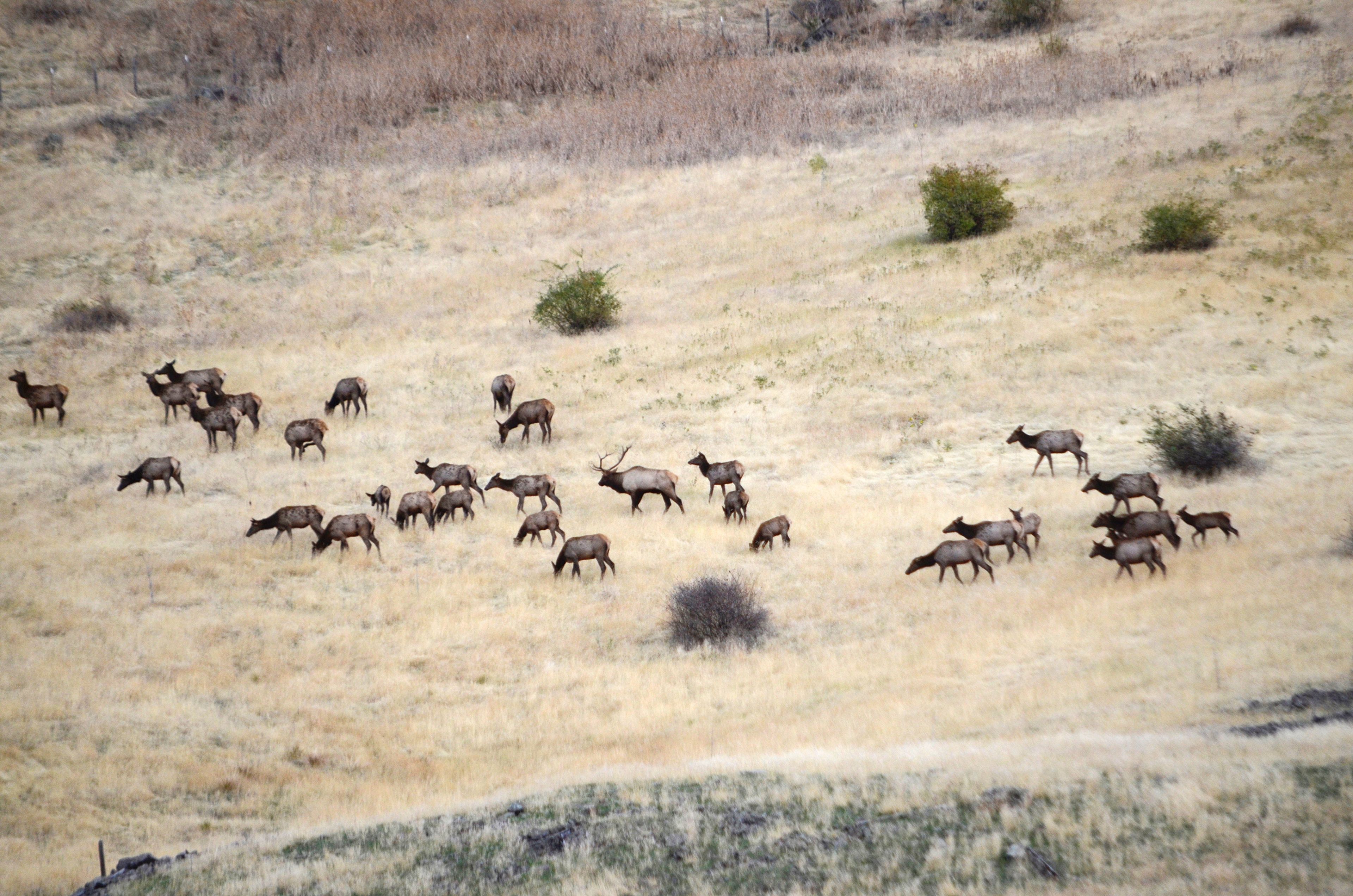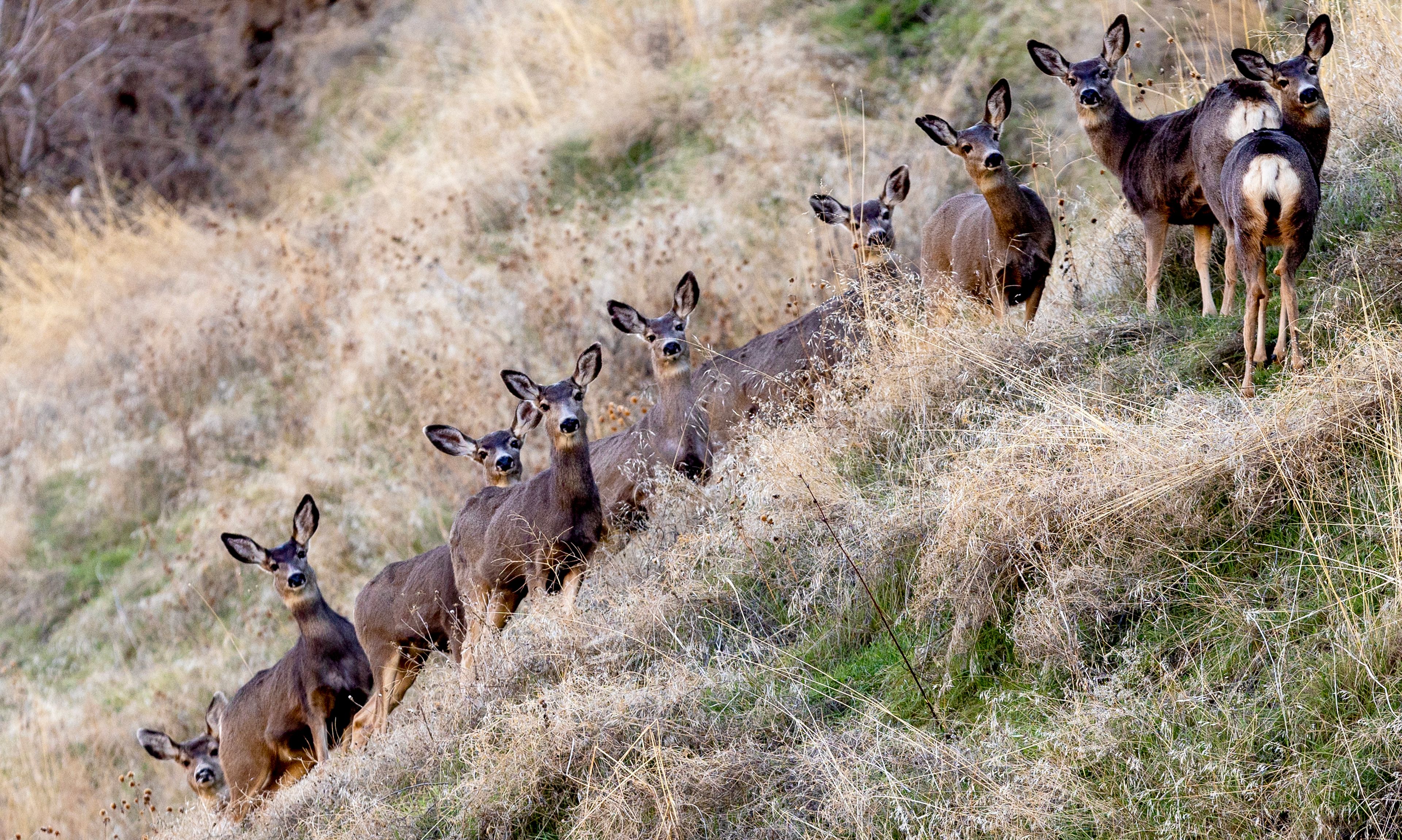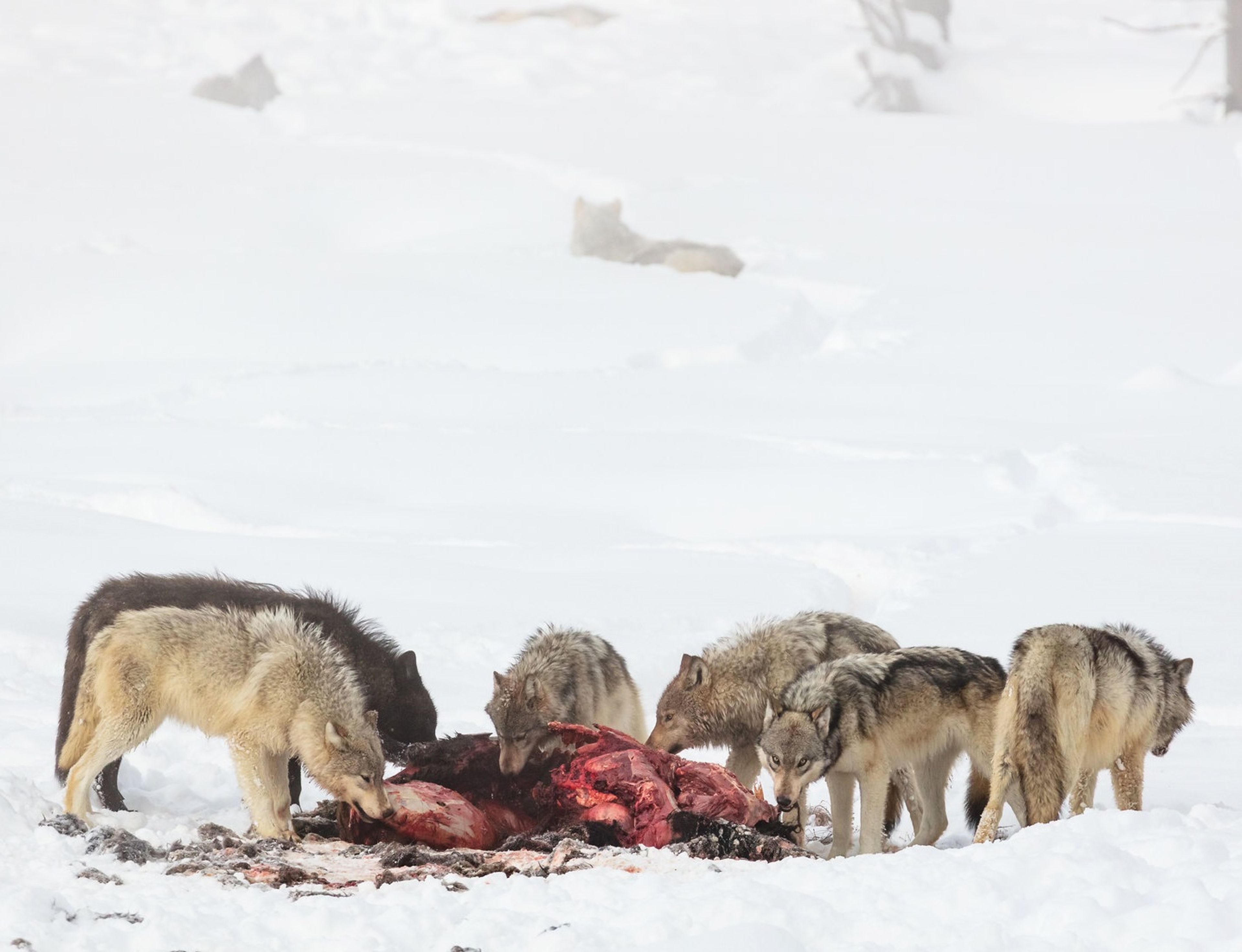Blue Mountain deer, elk still limited by poor weather and predators
Numbers are slightly improved but remain below objectives
The number of elk available for hunters in the Blue Mountains and river canyons of southeastern Washington is expected to be similar to what they have experienced in the past five years.
That’s bad news. The elk herd there was hit with severe weather in the winters of 2016-17 and 2018-19. Drought conditions in 2015 and 2021 added to the problem. And elk calf survival has been at record low numbers over the past few years.
Surveys conducted last year showed the herd to be stable, but at a population well below the objective of 5,500 set by the Washington Department of Fish and Wildlife. Biologists from the agency conducted survey flights during the first two weeks of March and estimated a population of 3,999. Two years ago, biologists estimated 3,901 elk roamed the Blues.
A project monitoring elk calf survival has shown predators like mountain lions account for about 77% of the mortality experienced by calves during their first few months of life. In the first year of the study, only about 13% of 100 calves survived. In the second year, survival increased to 47%. The agency hasn’t released an update to the monitoring project.
The poor calf survival rates mean there will be fewer spike bull elk available for hunters in the Blue Mountains.
Deer
The same combination of harsh winters intermixed with summer drought has also taken its toll on whitetail and mule deer. In addition, periodic outbreaks of blue tongue and epizootic hemorrhagic disease, especially in 2021, have led to population declines and drops in hunter participation and harvest. Biologists are optimistic that conditions may be aligning for the better.
“With good growing conditions last spring and an average winter, we expect overwinter survival was good, and are expecting deer harvest to marginally improve again through the 2024 hunting season,” they wrote in an annual hunter prospects report.










